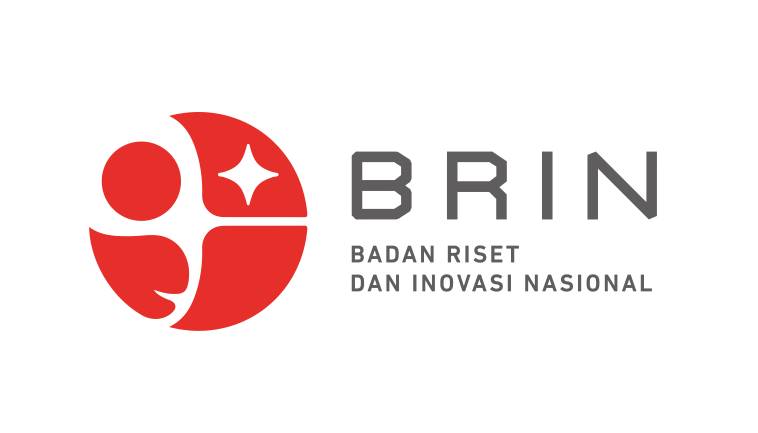Penerapan Dukungan Teknologi Dalam Meningkatkan Loyalitas Nasabah Pada Banking Super-APP Platform
DOI:
https://doi.org/10.35384/jkp.v21i1.608Keywords:
Dukungan teknologi, Perceived Risk, Relative Advantages, Loyalitas NasabahAbstract
Latar belakang penelitian ini didasari oleh pesatnya perkembangan teknologi informasi yang mempengaruhi sektor perbankan, khususnya dalam penggunaan aplikasi mobile banking. Aplikasi mobile banking Bank X menjadi salah satu yang paling diminati, dengan pertumbuhan jumlah pengguna dan transaksi yang signifikan. Namun, terdapat kesenjangan penelitian terkait faktor-faktor yang mempengaruhi loyalitas nasabah dalam menggunakan layanan ini. Tujuan penelitian ini adalah untuk menganalisis pengaruh faktor-faktor seperti usability, customer service, customer trust, customer satisfaction, perceived risk, dan relative advantages terhadap loyalitas nasabah pengguna aplikasi mobile banking. Penelitian ini menggunakan metode kuantitatif deskriptif dengan pendekatan survei. Data dikumpulkan melalui kuesioner yang disebarkan kepada 100 responden yang merupakan pengguna aplikasi mobile banking. Analisis data dilakukan dengan menggunakan teknik Structural Equation Modeling (SEM) melalui perangkat lunak SmartPLS 3. Hasil penelitian menunjukkan bahwa usability memiliki pengaruh positif signifikan terhadap customer trust, customer service, dan customer satisfaction. Selain itu, customer satisfaction dan customer trust juga terbukti mempengaruhi loyalitas nasabah secara signifikan. Sebaliknya, perceived risk tidak menunjukkan pengaruh signifikan terhadap loyalitas, sementara relative advantages berperan penting dalam meningkatkan loyalitas nasabah. Kesimpulannya, untuk meningkatkan loyalitas nasabah, Bank Mandiri perlu memperkuat faktor usability, customer service, dan kepercayaan nasabah terhadap aplikasi mobile banking.
References
Achieng, B. M., & Ingari, B. K. (2015). Factors influencing the adoption of mobile banking in Kenya’s commercial banks: A case of Kenya Commercial Bank (KCB) Kilindini branch. International Journal of Scientific and Research Publications, 5(10), 1–14. http://www.ijsrp.org/research- paper1015.php?rp=P464742%0D
Amin, N. F., Garancang, S., & Abunawas, K. (2023). Konsep Umum Populasi dan Sampel dalam Penelitian. JURNAL PILAR: Jurnal Kajian Islam Kontemporer, 14(1), 103–116.
Bevan, N. K., Kirakowski, J., & Maissel, J. (1991). What is usability? Proceedings of the 4th International Conference on HCI.
Bitner, M. J. (1992). Services capes: the impact of physical surroundings on customers and employees. Journal of Marketing, 56(2), 57–71. https://doi.org/10.1177/002224299205600205
Burgers, A., de Ruyter, K., Keen, C., & Streukens, S. (2000). Customer expectation dimensions of voice-to-voice service encounters a scale-development study. International Journal of Service Industry Management, 11(2), 142–161. https://doi.org/10.1108/09564230010323642
Burrell, G., & Morgan, G. (1994). Sociological Paradigms and Organisational Analysis. Heinemann.
Carranza, R., Díaz, E., & Martín-Consuegra, D. (2018). TheInfluenceof Quality on Satisfaction and Customer Loyalty with an Importance-Performance Map Analysis: Exploring the Mediating Role of Trust. Journal of Hospitality and Tourism Technology, 9(3), 380-396.
Carvalho, H. D. F., Saldanha, E. D. S., & Amaral, A. M. (2020). The Mediation Effects of Customer Satisfaction on the Relations Between Product Price, Service Quality and Purchasing Decision. Timor Leste Journal of Business and Management, 2(1), 14–26. https://doi.org/10.51703/bm.v2i2.18
Chien, L. H., & Chi, S. Y. (2019). Corporate Image as a Mediator between ServiceQuality and Customer Satisfaction: Difference across Categorized Exhibitors. Heliyon, 5(3).
Chui, T. B., Ahmad, M. S. bin, Bassim, F. binti A., & Zaim, N. binti A. (2016). Evaluation of Service Quality of Private Higher Education Using Service Improvement Matrix. Procedia -Social and Behavioral Sciences, 114, 132– 140.
Ciputra, W., & Prasetya, W. (2020). Analisis Pengaruh E-Service Quality, Perceived Value Terhadap Customer Satisfaction, Trust, dan Customer Behavioral Intention. COMMENTATE: Journal of Communication Management, 1(2), 109. https://doi.org/10.37535/103001220201
Davis, F. D. (1989). Perceived usefulness, perceived ease of use, and user acceptance of information technology. MIS Quarterly, 13(3), 319–340. https://doi.org/10.2307/249008
Dias, S. N. R. F., & Dissanayake, W. D. M. B. K. (2023). The Impact of Mobile Banking Services on the Customer Satisfaction of Commercial Banks in Sri Lanka. Wayamba Journal of Management, 14(1), 1–15. https://doi.org/10.4038/wjm.v14i1.7593
Esmaeili, A., Haghgoo, I., Davidaviciene, V., & Meidute-Kavaliauskiene, I. (2021). Customer Loyalty in Mobile Banking: Evaluation of Perceived Risk, Relative Advantages, and Usability Factors. Inzinerine Ekonomika-Engineering Economics, 32(1), 70–81. https://doi.org/10.5755/j01.ee.32.1.25286
Fernandes, T., & Pedroso, R. (2017). The effect of self-checkout quality on customer satisfaction and repatronage in a retail context. Service Business, 11(1), 69–92. https://doi.org/10.1007/s11628-016- 0302-9
Ganguli, S., & Roy, S. (2011). Generic technology-based service quality dimensions in banking. The International Journal of Bank Marketing, 29(2), 168–189. https://doi.org/10.1108/02652321111107648
Geyskens, I., Steenkamp, J. B. E. M., & Kumar, N. (1999). A meta-analysis of satisfaction in marketing channel relationships. Journal of Marketing Research, 36(2), 223–238. https://doi.org/10.2307/3152095
Ginting, Y. M., Chandra, T., Miran, I., & Yusriadi, Y. (2023). Repurchase intention of e-commerce customers in Indonesia: An overview of the effect of e-service quality, e-word of mouth, customer trust, and customer satisfaction mediation. International Journal of Data and Network Science, 7(1), 329–340. https://doi.org/10.5267/j.ijdns.2022.10.001
Hair, J. F., C, W., Black, B. J., Babin, R. E., Anderson, & Ronald Tatham, L. (2014). Multivariate Data Analysis. Pearson Education.
Hair, J. F., Hult, G. T. M., Ringle, C. M., & Sarstedt, M. (2017). A Primer on Partial Least Squares Structural Equation Modeling (Second Edi). SAGE Publications, Inc.
Hariani, D., Nurcahyanto, H., & Adipurnawati, D. M. (2019). Relative Advantage Dalam Inovasi Lapor Hendi Di Kota Semarang. Collaborative Governance Dalam Pengembangan Pariwisata Di Indonesia, 01(01), 440–452.
Japarianto, L., & Khomariyah. (2007). Analisa Kualitas Layana Sebagai Pengukur Loyalitas Pelanggan Hotel Majapahit Surabaya Dengan Pemasaran Relasional Sebagai Variabel Intervening. Dimensi Manajemen Perhotelan, 3(1), 34–42.
Jenneboer, L., Herrando, C., & Constantinides, E. (2022). The Impact of Chatbots on Customer Loyalty: A Systematic Literature Review. Journal of Theoretical and Applied Electronic Commerce Research, 17(1), 212–229. https://doi.org/10.3390/jtaer17010011
Johannes, V. D., Indarini, I., Margaretha, S., Manajemen, J., Bisnis, F., & Ekonomika, D. (2019). Pengaruh Usability, Customer Satisfaction, Customer Service dan Trust Terhadap Loyalty Pengguna Mobile Banking di Surabaya. Jurnal Ilmiah Mahasiswa Universitas Surabaya, 7(2), 2378–2388. https://journal.ubaya.ac.id/index.php/jimus/article/view/3513
Kamtarin, M. (2012). The Effect of Electronic Word of Mouth, Trust and Perceived Value on Behavioral Intention from the Perspective of Customers. International Journal of Academic Research in Economics and Management Sciences, 1(4).
Khairawati, S. (2020). Research in Business & Social Science Effect of customer loyalty program on customer satisfaction and its impact on customer loyalty. International Journal of Research in Business and Social Science, 9(1), 15– 23.
Kim, K., & Prabhakar, B. (2000). Initial trust, perceived risk, and the adoption of internet banking, Proceedings of the TwentyFirst International Conference on Information Systems. Association for Information Systems Atlanta, 537–543.
Koenig‐Lewis, N., Palmer, A., & Moll, A. (2010). Predicting young consumers’ take up of mobile banking services. International Journal of Bank Marketing, 28(5), 410–432. https://doi.org/10.1108/02652321011064917
Kunadi, E. F., & Wuisan, D. S. . (2021). Pengaruh E-Service Quality Dan Food Quality Terhadap Customer Loyalty Pengguna Gofood Indonesia Yang Dimediasi Oleh Perceived Value Dan Customer Satisfaction. JMBI UNSRAT (Jurnal Ilmiah Manajemen Bisnis Dan Inovasi Universitas Sam Ratulangi), 8(1), 141–162. https://doi.org/10.35794/jmbi.v8i1.33851
Laras, A. (2024). Rapor Pengguna Mobile Banking Bank Jumbo Kuartal I/2024: BRI Teratas, Mandiri Melesat! Https://Finansial.Bisnis.Com/Read/20240529/90/1769456/Rapor-Pengguna- Mobile-Banking-Bank-Jumbo-Kuartal-I2024-Bri-Teratas-Mandiri-Melesat.
Lee, M. (2009). Factors influencing the adoption of internet banking: An integration of TAM and TPB with perceived risk and perceived benefit. Electronic Commerce Research and Applications, 8(3), 130–141. https://doi.org/10.1016/j.elerap. 2008.11.006
Luarn, P., & Lin, H. (2005). Toward an understanding of the behavioural intention to use mobile banking. Computers in Human Behavior, 21(6), 873–891. https://doi.org/10.1016/j.chb.2004.03.003
Marinda, A. (2024). Transaksi Mobile Banking Mandiri Naik Signifikan per Mei 2024. Https://Keuangan.Kontan.Co.Id/News/Transaksi-Mobile-Banking-Mandiri-Naik-Signifikan-per-Mei-2024.
Mayer, R. ., Davis, J. H., & Schoorman, F. D. (1995). An Integratif Model of Organizational Trust. Academy of Management Review, 30(3), 709–734.
Mohammadi, H. (2015). A study of mobile banking loyalty in Iran. Computers in Human Behavior, 44, 35–47. https://doi.org/10.1016/j.chb.2014.11.015
Moorman, C., Deshpande, R., & Zaltman, G. (1993). Factors affecting trust in market research relationships. Journal of Marketing, 57(1), 81–101.
Morgan, R. M., & Hunt, S. D. (1994). The Commitment-Trust Theory of Relationship Marketing. Journal of Marketing, 58(3), 20. https://doi.org/10.2307/1252308
Murniati, M. P. (2013). Alat-Alat Pengujian Hipotesis. Penerbitan Unika Soegijapranata.
Musyafaah, N. M. (2016). Pengaruh Usability Terhadap Satisfaction, Brand Trust dan Brand Loyalty pada Pengguna Ponsel Iphone. Universitas Airlangga.
Nielsen, J. (2012). Usability 101: Introduction to Usability. All Usability.
Nielsen, J., & Hackos, J. T. (1993). Usability Engineering. Academic Press. Parasuraman, A., A, V., Zeithaml, & Berry, L. L. (1998). ERVQUAL: A Multiple-Item Scale for Measuring Consumer Perceptions of Service Quality. Retailing: Critical, 64(1), 12–40.
Pikkarainen, T., Pikkarainen, K., Karjaluoto, H., & Pahnila, S. (2004). Consumer acceptance of online banking: An extension of the technology acceptance model. Internet Research, 14(3), 224–235. https://doi.org/10.1108/10662240410542652
Pirie, C. R., & Tambotoh, J. J. C. (2022). Analisis kebergunaan menggunakan usefulness, satisfaction, and ease-of-use questionnaire pada perbankan digital. Jurnal Sistemasi, 12(1), 154–165. https://sistemasi.ftik.unisi.ac.id/index.php/stmsi/article/view/2396/527
Pratama, R. A. P., & Kristiawati, I. (2023). Pengaruh Marketing Communication, Experiential Marketing, Dan Customer Trust Terhadap Customer Loyalty Pada Pt. Andalan Pacific Samudra. Yos Soedarso Economic Journal (YEJ), 5(3), 52–69. https://ejurnal.uniyos.ac.id/index.php/ysej- server/article/view/yej5306/284
Rito, R., & Azzahra, F. (2021). Product Innovation on Customer Satisfaction and Brand Loyalty of Smartphone Users. AGREGAT: Jurnal Ekonomi Dan Bisnis, 5(2), 214–227. https://doi.org/10.22236/agregat
Sauer, J., Sonderegger, A., & Schmutz, S. (2020). Usability, user experience and accessibility: towards an integrative model. Ergonomics, 63(10), 1207–1220. https://doi.org/10.1080/00140139.2020.1774080
Septiana, N. A., & Nosita, F. (2020). E-Servqual, Promosi dan Loyalitas Pelanggan Marketplace. Journal of Appied Business Administration, 41(1), 95–118. https://iba-du.edu/upload_images/Vol. 41_No.1_Article_6.pdf
Sinurat, A. E. T., Ramli, A. H., & Purnomo, S. H. (2024). Pengaruh E-Service Quality, E-Trust, E-Customer Satisfaction Terhadap E-Customer Loyalty Pada Marketplace Shopee. Jurnal Bisnisman : Riset Bisnis Dan Manajemen, 5(3), 80–102. https://doi.org/10.52005/bisnisman.v5i3.199
Siregar, M. K., & Pratomo, L. A. (2020). Antesenden dari Customer satisfaction pada Online Travel Service. Al Tijarah, 6(3), 21. https://doi.org/10.21111/tijarah.v6i3.5604
Siregar, Y. S., Darwis, M., Baroroh, R., & Andriyani, W. (2022). Peningkatan Minat Belajar Peserta Didik dengan Menggunakan Media Pembelajaran yang Menarik pada Masa Pandemi Covid 19 di SD Swasta HKBP 1 Padang Sidempuan. Jurnal Ilmiah Kampus Mengajar, 2(1), 69–75. https://doi.org/10.56972/jikm.v2i1.33
Sugiyono. (2019). Metode Penelitian Kuantitatif, Kualitatif, dan R&D. Alfabeta.
Swan, J. E., & Oliver, R. L. (1989). Postpurchase communications by consumers. Journal of Retailing, 65(4), 516–533.
Wibowo, T. (2018). The Influence of Consumer Trust and Expectation on Online Repurchase Intention through Customer Satisfaction on the Bukalapak Online Buying and Selling Site in Yogyakarta City. Jurnal Ekobis Dewantara, 1(12), 22–30.
Wijaya, A. (2019). Metode Penelitian Menggunakan Smart Pls 03. Innosain.
Wu, J., & S, W. (2005). What drives mobile commerce?: An empirical evaluation of the revised technology acceptance model. Information & Management, 42(5), 719–729. https://doi.org/10.1016/j.im.2004.07.001
Yeh, Y. ., & Li, Y. M. (2009). Building trust in m-commerce: contributions from quality and satisfaction. Online Information Review, 33(6), 1066–1086. https://doi.org/10.1108/14684520911011016
Yonatan, A. Z. (2024). Mobile Banking Terpopuler di Indonesia 2024. Https://Data.Goodstats.Id/Statistic/Mobile-Banking-Terpopuler-Di- Indonesia-2024-MdFQB.
Yoon, S. J., & Kim, J. H. (2000). An empirical validation of a loyalty model based on expectation disconfirmation. Journal of Consumer Marketing, 17(2), 120–136. https://doi.org/10.1108/07363760010317196
Zeithaml, V. ., Bitner, M. ., & Gremler, D. . (2006). Services Marketing : Integrating Customer focus across the firm (4th ed.). McGraw Hill.









